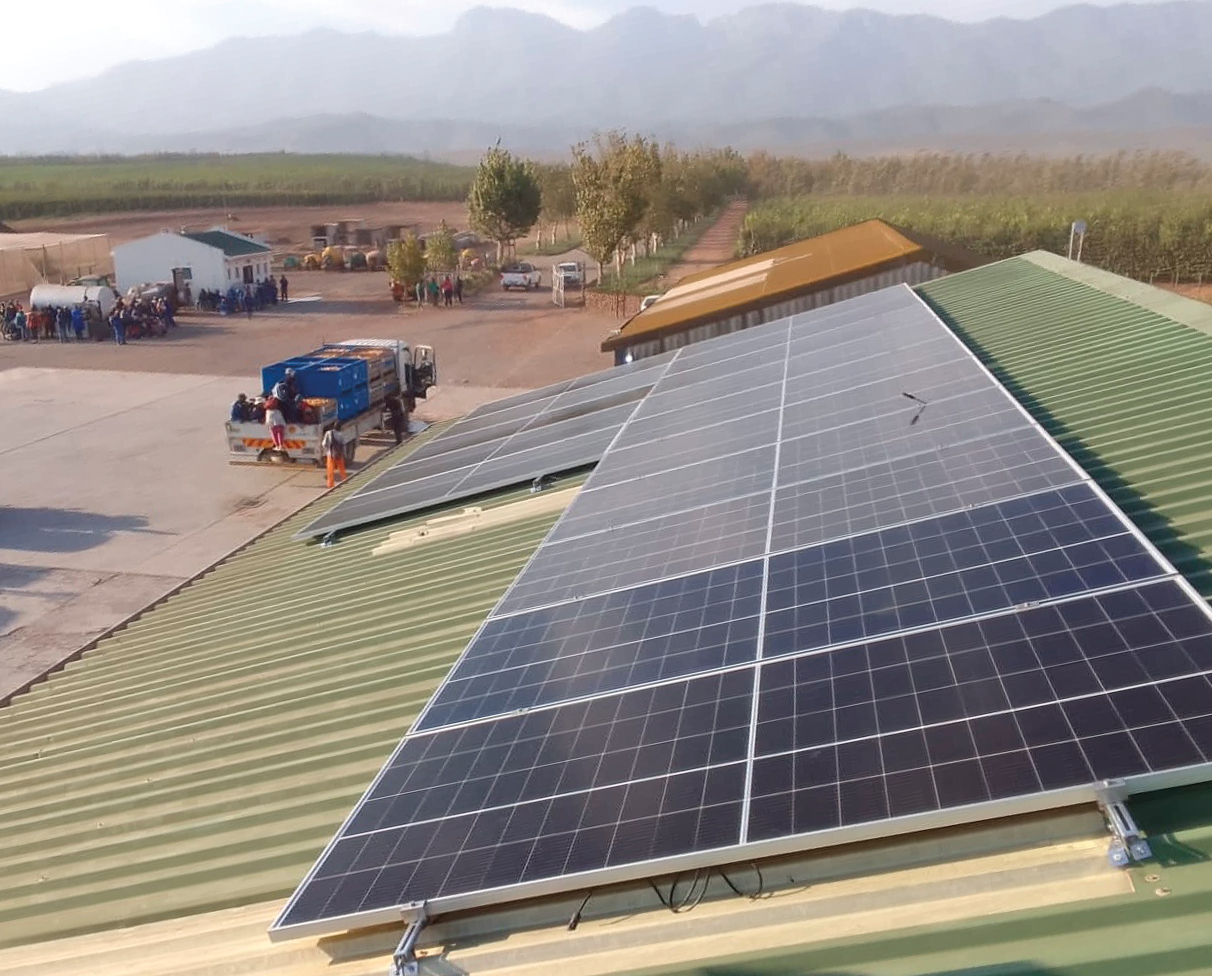Clean energy utility infrastructure is Western Cape agriculture company’s answer
Thanks to a new integrated energy solution, a major Western Cape agriculture company pays less for energy, is 30% off the Eskom grid and drastically reduced its carbon footprint thanks to the energy supply from renewable sources.
Blue Energy Africa, a South African-based, Africa-focused developer and operator of clean energy infrastructure, implemented an integrated energy solution for Smuts Brothers Agri in Robertson in the Western Cape, allowing their operations to go green.
Smuts Brothers Agri, a division of Lucerne Agri Investments, is an integrated agriculture company with various divisions, which ensure control of the value chain and driving sustainability. According to Juan-Ivan Smuts, CEO of Lucerne Agri, the company produces roughly 35 000 tons per year on its own farms and currently creates around 2 000 jobs on these farms and in its warehouses.
According to a 2023 report compiled by the Bureau for Food and Agricultural Policy (BFAP) for the Western Cape Department of Agriculture on the impact of loadshedding on the Western Cape agricultural sector, 90% of producers in the Western Cape are dependent on Eskom as their primary, or only, source of electricity in 2022. However, some businesses have already started investing in alternatives.
Energy insecurity and the need for sustainable, clean energy alternatives creates an opportunity for Blue Energy Africa to develop and operate embedded clean energy utility infrastructure, such as the solution implemented for Smuts Brothers Agri.
This answer consists of three hybrid solar and battery energy storage solutions that will provide energy security and cost savings to operations. The primary solar battery installation comprises of 217 kWp of ground-mounted solar panels integrated with ~300 kWh battery storage to power the Smuts irrigation system.
The two adjacent farms received 70 kWp solar solutions with 70 kWh battery backup. Combined, the entire Smuts Brothers system will produce more than 370 MWh per year, reducing their emissions by more than 800 tons each year.
The key was the upgrade of the irrigation system to an energy-efficient pumping system that reduces pumping load and operational hours. This was achieved through the implementation of optimised filter banks, variable speed drives and energy-efficient pumps. The pump sizes were increased to enable the pumps to run when the sun shines, ensuring the cheapest, cleanest and most reliable supply, making the farms not only more profitable, but also kickstarting Smuts’ journey of transitioning to 100% renewable energy.
The resultant solution ensures the farms – Olyvendal, Klipboschlaagte stores and Klipboschlaagte dam pumphouse – are now paying less for energy and are free of energy interruptions during loadshedding. As a result, they can claim carbon offsets owing to the energy supply coming from renewable sources.
Says Marcel Steinberg, chief executive officer of Blue Energy, “By understanding our clients’ needs and sustainability goals, we can tailor funding and technical solutions to address their need for energy security and carbon mitigation. With over 6,2 million kWh saved and more than 16 000 tons of CO2 savings achieved over the project life cycle, this is a great first step towards a cleaner and more sustainable future for all.”
The project was funded by Gaia Fund Managers’ Renewables REIT (Real Estate Investment Trust), the first of its kind in Africa, listed on the Cape Town Stock Exchange.
Renier de Wit, managing director of Gaia, adds: “We believe sustainable agriculture is essential for addressing the interconnected challenges of climate change, food security and environmental degradation. Our strategy for sustainable agri-food systems reflects our unwavering commitment to driving positive change and creating a more resilient and equitable food system for the African continent for future generations. By embracing renewable energy, energy efficiency and water efficiency solutions, we can build a more sustainable future for agriculture in sub-Saharan Africa.”



